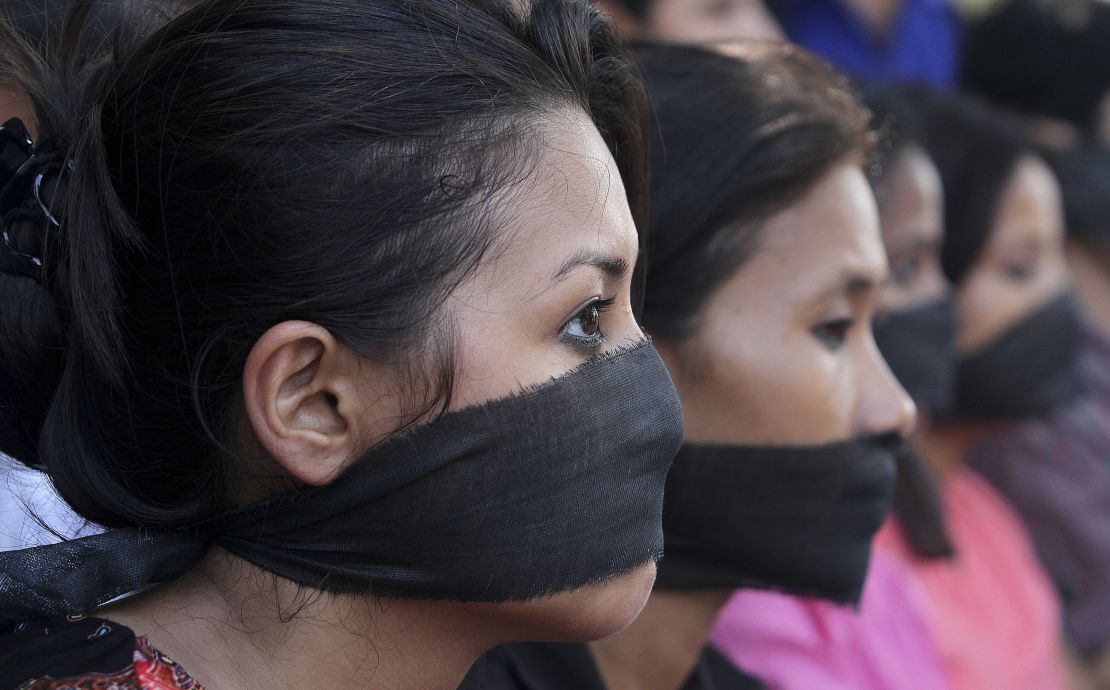When 25-year old Kajal went to the police station to file a complaint that two men had raped her, she says she was beaten by the police.
Later, when she went to a government hospital for a medical examination, she says the doctor asked her: “Why did you go out alone?”
Yet Kajal, a young woman from Neemuch district in the central Indian state of Madhya Pradesh, says she is not angry. “There is no purpose in anger,” she tells CNN, but she is scared.
Kajal is using a pseudonym out of fear for her safety.
Her case is one of the 21 cases that form the basis of a new report by Human Rights Watch (HRW), detailing whether reforms on sexual assault policies in India have had any effect.
Five years after a gang rape in Delhi that shocked the world, the HRW investigation finds that the country’s medical and legal system has not caught up with the changes in the law and regulation.

Kajal’s case is not exceptional, said Amu Vinzuda, a program coordinator with Jan Sahas, a social development organization which partnered with HRW on the report.
What happened with Kajal often happens when the accused has more status, wealth or power, Sahas said.
Kajal is determined to see her rapists punished, but so far that hasn’t happened.
“They destroyed my life,” she said, “[but] they didn’t spend a single day in jail.”
Women’s safety initiatives
Shortly after the 2012 gang rape in which a group of men attacked a young woman named Jyoti Singh Pandey who later died from her injuries, the Indian government strengthened punishments for cases of sexual harassment and assault. This involved increasing the length of prison sentences and adding the death penalty.
In addition, the government set up fast-track courts and set up a $480 million budget, known as the Nirbhaya Fund, for new women’s safety initiatives.
In the nation’s capital, there has been some change, thanks to training workshops on the new laws and practices. “You see the change in the courtroom in the way things are being conducted,” said lawyer Vrinda Grover.
But mostly, the reforms are on paper.
From the moment a woman approaches a police station, she faces multiple barriers, according to the new report.
If the victims are from a poor family, or a lower caste, police may choose not to even register their complaint of sexual assault. Alternatively, there are multiple cases where the police pressured women to settle their complaints for money, HRW’s investigation found.
Even if police start an investigation, they don’t tell families or victims about free legal aid or the monetary compensation they are owed, said Sandhya Gokhale, a founder of Forum Against the Oppression of Women, adding that many are unaware of the new initiatives.
“A woman is treated only as a witness,” Gokhale said. “Only after five years, she will be called, until then she will have no idea what happens in her case.”
The ‘two-finger test’
New guidelines issued in 2014 on medical care for survivors of sexual assault warned against depending solely on the two-finger test, an exam which supposedly determines whether a woman is used to sex.
But a woman is still likely to undergo the test, despite it also coming under criticism in recent years for being scientifically inaccurate and irrelevant to cases of rape.
A study of fast-track court judgments in the southern Indian state of Karnataka found that 25% of the judgments explicitly referenced the two-finger test and whether a victim was sexually active, according to the HRW report.
Furthermore, only nine out of 29 states have adopted the 2014 guidelines on medical care, according to HRW. Medical care also rarely includes the type of long-term counseling that a survivor of trauma needs.
And with creating programs on female safety, the Nirbhaya fund remained unspent for the first three years. Now, about 20% of it has been allocated for recommended programs as of 2016, according to Center for Budget and Governance Accountability.
“There needs to be more resources, monitoring and accountability,” said Jayshree Bajoria, the author of the report. “That is key to anything working.”

Change of mindset
If there’s been any change, it’s been in the community, activists say.
Indian civil society organizations have taken the lead in providing victims with initiatives like Why Loiter, where women band together to walk at night, and SafetiPin, an app that allows a user to highlight concerns on a street or a particular neighborhood and share it with others.
There’s been a change of mindset too, believes Vinzuda, the Jan Sahas activist. Victims are no longer blaming themselves, and their families are starting to support them, she said.
After the 2012 rape, millions of Indians took to the streets to protest the flaws in the system.
The conversations and the protests continue in 2017. In January, concerned Indians formed a spontaneous protest called #IWillGoOut in reaction to multiple cases of sexual harassment on the streets of Bangalore over the New Year.
More recently, Indians shared their stories of sexual assault as part of the global #MeToo movement.
“We are not going to live the life of half-citizens anymore” said Grover.








